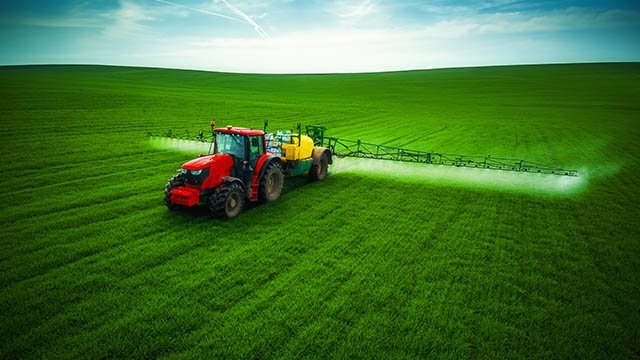Transcription: Q & A with Jeffrey Smith: Which Non-GMO Crops are Sprayed with Glyphosate and Why?
Jeffrey Smith (00:10):
Hi, I am Jeffrey Smith and I’m with Bethany, who basically runs the shop at the Institute for Responsible Technology. And if you have ever sent an email to info@, she is the one who responded. So, Bethany, can you name a question that people are asking more than once that we should answer now?
Bethany (00:28):
Right. A lot of people want to know which non-GMO crops are being sprayed with glyphosate just before harvest and why are they being sprayed?
Jeffrey Smith (00:40):
Alright. For those who may be needing a little bit of background, glyphosate is the chief poison in Roundup, and we became very familiar with Roundup because Roundup Ready crops are by far the vast majority of all GMO’s. They are designed to be sprayed with Roundup at any time during the growing season. The crops don’t die. All of the other crops or the other plants around them, essentially weeds, are killed. So we were focusing for years, Bethany, on just Roundup sprayed on Roundup Ready crops, and I was at a conference years ago and a farmer said, “You know, they spray Roundup on non-GMO crops at the end, as a desiccant”.
(01:26):
And if there was a soundtrack to my life, it was like, boom, boom, boom, boom, and I was like, “What!?” And I said, “I need to know more about this”. And I think I was filming for something and I wasn’t able to jump in and understand the implications of it.
So, let’s say you have a wheat field or oats or whatever and you are going to harvest. If you are in a cold climate and you have a short growing season, you want to make sure that everything is ripened in time, uniformly and quickly. You can spray a glyphosate-based herbicide like Roundup and it will force maturation because it is going to kill the crop. So the crop is like, “We’re going to die! Give all the energy to our offspring, they will carry on.” That’s how they force the ripening of the grain.
At the same time, it dries down the grains, so that if it is kept in a way that could otherwise get moist and moldy, that’s eliminated. And at the same time, it does what farmers call “staging,” meaning it kills the weeds that could emerge the next year. So, it accomplishes a lot for farmers, but unfortunately, it’s a disaster for health, because if you look at the amount of glyphosate residues in oats, which you’re just sitting there saying, “Don’t spray me, I’ll absorb…, oh darn!” It absorbs all the glyphosate and it’s higher than Roundup Ready soy and corn. The grains and the beans in particular. If you buy hummus in the United States that is not organic, and even if it says non-GMO, if it is not organic it may be sprayed with high levels of glyphosate; that includes the chickpeas, the peas, the mung beans, and all the grains.
(03:20):
We don’t have a comprehensive list, because the US Government decided not to do comprehensive testing of all the products for herbicide residues like they do for all of the other herbicides because they are friends with Monsanto, now Bayer, and they have ignored our health because they believe, “Oh, it’s all safe”. We applaud all the organizations that are doing independent analysis of basic fruits, vegetables, and grains as well as finished products- brand named things. For example, the Environmental Working Group tested a bunch of oat-based breakfast cereals, there is a laboratory in Iowa that does the testing. So, what did we do? We created a report for you with all of them. Actually, Bethany created the report. Thank you, Bethany! Thousands of people around the world are really appreciating your work.
(04:21):
We have put together everyone’s reports in a way that you can find finished products, brand named products, which ingredients or produce have been tested and what the results are. Uniformly, organic tests less, quite a bit less than non-organic, but it is not all the way zero. Sometimes it is undetectable. Sometimes, even a conventional crop is undetectable, but why would organic have any spray? Well, it turns out that the use of glyphosate is so prevalent that the US Geological Survey found it in 60 to 100% of the air samples and the rain samples in the Midwest, and in Mississippi it was 75%. So, when there are massive amounts of glyphosate being sprayed, some can end up in the atmosphere, some can get on the crops, through the water supply, through the rain, and through the air. So, you won’t necessarily be a 100% clean if you buy organic,
(05:29):
even those that protect themselves as well as possible, but you should favor as much as possible those that are taking precautions so that your intake of glyphosate is as little as possible. Go to www.responsibletechnology.org and click on that report, take a look at it and consult with it later on, because every time a new group does testing, Bethany is on it, she’ll add it and that will keep us informed. In the meantime, oats, wheat, legumes, wine, beer, orange juice, they have glyphosate residues. Did I get it at all or is there anything else to add, Bethany?
Bethany:
That was great. Thank you.
Jeffrey Smith:
Alright, and thank you on behalf of everyone for putting that together. Safe eating.


